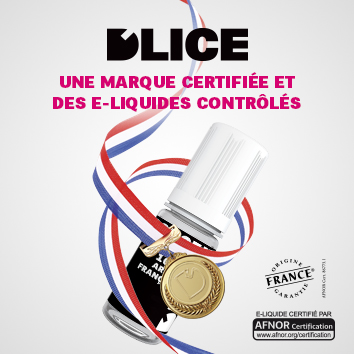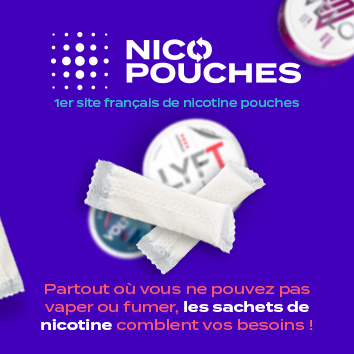The secrets behind e-liquid manufacturing

1. Composition
Flavorists will use raw materials to work on the creation of a new-liquid. They will rely both on market demands and on their imagination to create innovative flavors. They evaluate the gustative and olfactive qualities of the products before freezing the composition of the product.
a. The base
 80 to 90% of the e-liquid is made of 2 elements: vegetable glycerin (VG) and propylene glycol (PG). The split between those ingredients can change. VG and PG are food components that have the specificity of converting into vapor at a very low temperature.
80 to 90% of the e-liquid is made of 2 elements: vegetable glycerin (VG) and propylene glycol (PG). The split between those ingredients can change. VG and PG are food components that have the specificity of converting into vapor at a very low temperature.
Vegetable Glycerin
Vegetable glycerin is a thick liquid that will make the blend viscous. The more VG there is in the e-liquid, the bigger the vapor cloud. E-liquids with a high VG content will feel softer and rounder. But the e-liquid will be more viscous and therefore the devices will tend to clog more easily.
Propylene Gycol
Propylene Glycol will intensify the aroma taste and will increase the ‘hit’ [1] sensation that is usually sought after by former smokers. The vapor generated by PG is fine and light.
b. Aromas

Food aromas generally represent 3 to 15% of the composition.
Those aromas will bring savor to the e-liquid. The aromas can be synthetic or natural or possibly a combination of those two.
c. Nicotine
 Nicotine is obtained through the extraction of tobacco leaves and their transformation in a liquid form. It is an alkaloid that will have a stimulant effect when used in low dose but is quickly eliminated. The use of nicotine in e-liquids is strictly supervised.
Nicotine is obtained through the extraction of tobacco leaves and their transformation in a liquid form. It is an alkaloid that will have a stimulant effect when used in low dose but is quickly eliminated. The use of nicotine in e-liquids is strictly supervised.
The ‘hit’ as previously described is proportional to the nicotine content. Therefore, a higher nicotine content will create a better hit.
Nicotine content in e-liquids is generally between 0 and 20mg/ml.
d. Alcohol
Ethyl alcohol may be used to homogenize and liquefy the blend. It will also intensify the action of propylene glycol and therefore improve the flavors of the product.
e. Water
We can also use demineralized water to fluidize the blend. Generally, water plus alcohol combined doesn’t exceed 5%.
f. Other components
We can find other components in e-liquids, such as diacetyl, propionyl acetyl, acetoine, formaldehyde, acetaldehyde, acroleine, etc. We do not recommend the use of such components.
2. Production
a. Procurement
E-liquid manufacturers are responsible for the quality of the products they manufacture. They therefore attach a strong importance to the sourcing of their materials and will make sure to establish trusting relationships with top quality suppliers.
b. Weighing

 The ingredients are weighed according to the composition set for each product. In the most controlled production facilities, the air is filtered to avoid product contamination and the health status is perfectly flawless. The staff must wear masks, blouses, head or shoe covers, here again to avoid the contamination of the products.
The ingredients are weighed according to the composition set for each product. In the most controlled production facilities, the air is filtered to avoid product contamination and the health status is perfectly flawless. The staff must wear masks, blouses, head or shoe covers, here again to avoid the contamination of the products.
c. Blending

Ingredients are then blended.
This step can be mechanized or handled manually by operators.
d. Filling

 The e-liquid which has been obtained after the blending of the raw materials is poured into individual glass or PET containers. This step can also be mechanized for a greater precision of the filling. This enables as well to manipulate more easily viscous liquids that have a higher VG content.
The e-liquid which has been obtained after the blending of the raw materials is poured into individual glass or PET containers. This step can also be mechanized for a greater precision of the filling. This enables as well to manipulate more easily viscous liquids that have a higher VG content.
e. Closing

Containers are hermetically closed with a cap and an inviolability seal.
f. Labeling

Containers are labelled during this last step. The label generally features the brand, the product name as well as potential health warnings according to the current standards.
You’ll also find on the label all the traceability features.
g. Packaging
Once the containers have been labeled, they are individually checked to ensure the perfect conformity of the product (labelling, closing, etc.).
Then, they are packaged in boxes, generally made of cardboard.
3. Controls
Companies who pride themselves on manufacturing premium e-liquids guarantee a high-level quality of their products by following hygiene, safety and environment rules. Various tests can be carried out to reach this goal.
a. Visual control of the packaging

This first control takes place at the end of the production. It enables to check that labeling is correctly placed. It also enables operators to check that containers have been closed correctly and sealed.
This visual control will be a good way to identify and correct potential setting errors (labeling too high or too low, double labeling, safety triangle for blind people, etc.).
b. Composition analysis
The analysis of the composition enables to check the proper observance of the standard composition as well as the quality of the raw materials.
Besides, it also enables to confirm the absence of heavy metals (iron, aluminum, arsenic, mercury, lead, and cadmium), aldehydes (formaldehyde, acetaldehyde, acroleine), diacetyl, etc.
c. Organoleptic quality testings

This sensorial analysis of the products will rely on an extensive visual, olfactive and tasting testing of the e-liquid.
When tasting an e-liquid, we must keep a clear mind during the first puff to avoid missing some interesting subtle tastes. Moreover, we must be really attentive to the evolution of the taste from the first sensations to the last ones. The vapor must preferably be breathed out through the nose to maximize the deposition of the molecules of the aroma on the olfactory mucosa.

It’s important to know that in fragrance on in food aromatics, a common vocabulary is absolutely mandatory to describe the taste and the odor of one’s perceptions. For example, the association of a flavor to a personal souvenir should not be used because it reflects the imagination of the person who is tasting. Instead, it’s better to use a uniformed vocabulary (examples: phenolic, apple fruity, green, soap, metallic, vanilla, powdery, balsamic, etc.)
d. Microbiological analysis
These analysis intend to control the purity of the product and to check that it has not been contaminated by some bacteria, mold, salmonella, staphylococcus or other yeasts.
e. Nicotine content testing
Nicotine bases are regularly analyzed to confirm the nicotine content of the product.
4. Packaging
a. Different packaging types and their characteristics
An e-liquid is packed in a labelled container. The container usually is hermetically sealed with a safety ring for children.
You can also find an individual cardboard packaging and an information pamphlet. You will find on the packaging the name of the product, the name of the manufacturer and the composition of the product (especially the nicotine content and the split PG/VG).
b. Health and hazard warnings
Warnings that identify population at risk for e-liquids: children, pregnant women, etc.
You’ll also find some pictograms on e-liquids containing nicotine. Even if the nicotine is diluted, a precautionary approach is conducted with a hazard pictogram. Indeed, when highly concentrated, nicotine can be deadly.
c. Traceability
The apposition of a batch number on the containers will enable to trace the origin of the raw materials used, but also the day and possibly the operators in charge of manufacturing the product.
5. Storage
E-liquids must be stored in a dry, ventilated and out of reach of children. We also recommend to avoid heat and light, even when the containers are opaque. When you have lots of references stores, it’s always better to arrange products by references to facilitate the handling.
If you wish to keep your e-liquids in the fridge, make sure you take them out of the fridge a few hours before using them. The liquid will become viscous when cold!
[1] The ‘hit’ is a fugitive feeling of tingling in the throat that is generally triggered by a puff of a traditional cigarette. It can be reproduced by an electronic cigarette.






